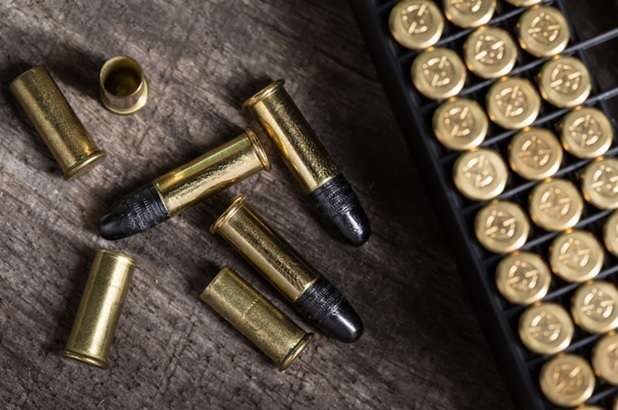If you’ve been in a gun shop at any time within the past three years looking for .22LR bulk ammo (or any ammo, really) you may have noticed something.
Stocks are stretched thin. Historically untouchable rounds like 12 gauge target loads and .223 are in short supply. Some sellers are even rationing what little stock they have with purchase limits.
This is a rare case in history in which it might even be easier to find oddball cartridges than common staples, simply because of the gap in demand.
Part of this has to do with the supply chain sensitivities of how cartridges are made, which makes them highly susceptible to shortages and increased demand.
To illustrate this point, let’s take a look at how 22LR ammo is made.
How .22LR Ammo Is Made
A cartridge is made up of several components. In the case of a centerfire cartridge, these are generally the casing, primer, and bullet, with a powder charge contained within the cartridge. In the rimfire configuration, there is no separate primer; primer is simply applied to the inside of the casing rim.
One of the first steps in the making of .22LR bulk ammo is to make the bullets. First, lead is melted and formed into cylindrical billets.
These cylindrical billets are extruded and drawn into wire that is roughly the appropriate diameter of a .22 caliber bullet.
At this point, the wire is cut into roughly bullet-shaped pieces, which are then swaged to manifest the proper dimensions.
If the bullets are to be copper plated, they are lowered into a solution that contains metal salts, including copper. A current is run through the solution, which causes the dissolution of copper atoms, which diffuse into the surface of the bullets.
To form the cartridges, a roll of brass plate is drawn out; cups are stamped and drawn out of the plate. At this stage, the casing looks like a rounded cup, closed at one end and open at the other.
Then the cups are formed into shape, and a rim is formed around the closed end. At this stage, the casings receive a headstamp and the casings are heat-treated, washed, and dried.
From there, the shape-formed casings are loaded into plates which carry them into a facility/room where they are primed.
Rimfire cartridges, like .22LR, must be primed during manufacture of the casings as the priming is integral to the cartridge and cannot be removed as a separate component.
The primer is applied while wet, which enables it to be handled safely and makes it easier to apply to the internal rim of the cartridge. A small drop of primer is applied to the inside base of each cartridge, and is distributed evenly through centrifugal force.
The cases are then carefully dried to ensure no moisture remains in the priming compound before loading resumes.
Once the casings are formed and the priming compound applied, the cartridges are loaded with a propellant charge (gunpowder). Then the bullets are seated and the casing neck is crimped to hold the bullet firmly in place.
At this point, at some facilities, the cartridges are treated with a wax compound; this helps dispel moisture and also combats corrosive influences. From there they are packaged and sent off to distributors.
Supply Shortages, Increased Demand
With rimfire ammo, specifically, the fact that the process must be maintained in sequence, which cannot be accelerated, makes it hard to cope with increased demands and supply shortages.
For instance, the world is currently experiencing a copper shortage, which complicates ammunition manufacturing. Other industries, such as electrical industries, compete with the arms industry for raw copper, which is used in the manufacture of bullets as well as casings, as copper is the main constituent of brass.
Other materials, such as barium and antimony, also occasionally face shortages, and these compounds are critical in priming agents. Even the supply of lead, necessary for the production of bullet cores, has been strapped in recent years, and has struggled to meet demand.
On top of the strain that currently exists with respect to raw materials, the industry has also been coping with an increase in firearm purchases and panic buying, both of which result in massive surges in demand.
These two factors alone substantially impact the market for ammunition, resulting in the increased prices and stockouts that we’ve all seen over the past three years.

Buying .22LR Bulk Ammo Online May Be the Answer
Considering the fact that loading .22LR ammo requires precise, intensive processes, and that it’s a very popular caliber, it’s been fairly hard to get over the past few years. It shares this in common with out popular rounds like .308, .223, 5.56, and 9mm.
However, if your local shop doesn’t have it, you may be able to get your .22LR bulk ammo online and save a bit in the process. Hopefully, ammo prices and supply will return to a state of near-normalcy soon. Until then, we are here to help.

